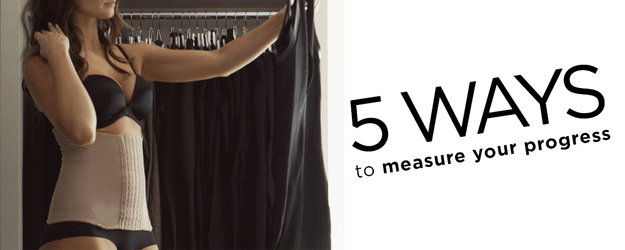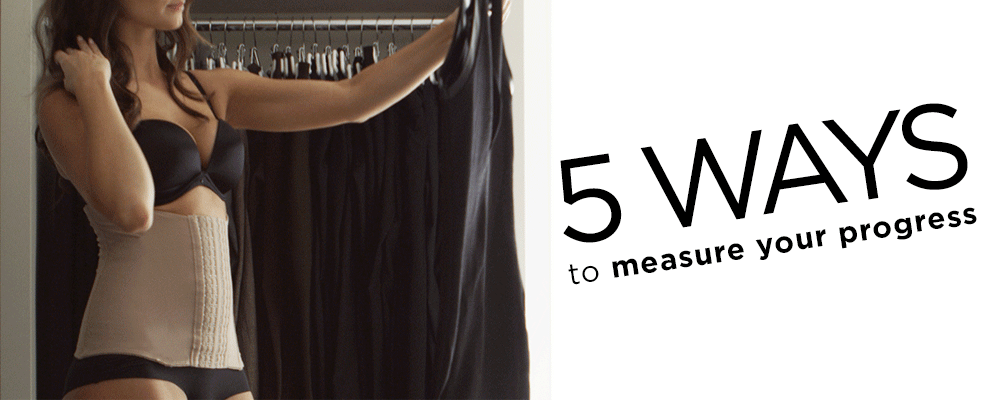5 Ways To Measure Waist Training Progress
Posted by hourglass angel on Jun 9th 2017
When you start a waist training regimen, one thing you’ll want to know is how your progress is coming along. Here's how to tell.
Along with most healthy lifestyle changes, it’s a long-term process rather than an overnight gain. While you’ll notice immediate slimming when you wear your waist trainer, you probably aren’t going to see much change in your natural figure day by day.
However, that doesn’t mean that change isn’t taking place. That’s why we strongly encourage anyone who is trying waist training to keep track of their progress over the long term; the results can, in fact, be quite drastic when you compare week by week or month by month.
Many people naturally try to track their health and fitness progress in pounds on the scale. While it’s not always a bad thing to track weight, particularly if you are drastically changing your eating habits, using your weight alone can be somewhat misleading. This is especially true if you are working hard to build muscle mass and may actually change your body’s shape without altering your weight at all.
There are better and more accurate ways to track your progress with your waist training and healthy lifestyle. Here are five practical methods you can start using at any time.
Waist Measurements
This is probably the most obvious way to track specifically how effective your waist training regimen is. This is a change that happens gradually, but you will be amazed at just how big of a difference even just a couple of inches will make.
To track accurately, take your waist measurement before you begin waist training. Using soft vinyl or fabric measuring tape, lay it flat around the narrowest part of your waist, which is above your belly button where there is a natural bend when you lean your torso to one side. Make sure it is level with the ground and not at an angle at any point. While the tape should lie flat, it shouldn’t pinch or be so tight that you can’t slip a finger underneath. For these reasons, it’s important to use tape that is designed for body measurements, like the one we provide in our Essential Waist Training Kit.
You may also want to then take a measurement of your waist while wearing your waist trainer to see how many inches you lose immediately. But the real progress you’ll want to measure is your natural waist.
Take your waist measurement at least once a month to get an accurate record of how you are progressing with your waist training—and be sure to write it down! We are always thrilled when we hear customers’ results.
Photos
We highly encourage you to take photos of yourself throughout your waist training journey. You don’t have to share them with the world if you don’t want to, but they can be very motivating when you see just how far you’ve come.
To get an accurate record of your progress, take your photos wearing the same clothing, in the same space, with the same lighting. Forward-facing, as well as profile shots, are both useful for capturing your transformations. Take a “before” photo and then weekly “after” photos for at least a couple of months. You can take a photo with or without your waist trainer, but we highly recommend you focus on the photos without so you can see your real results. If you’ve been waist training for a while, try comparing photos several months apart to see the most drastic changes.
If you do want to share your progress, be sure to use #BeTheHourglass and tag @hourglassangel on Instagram or Twitter so that you can inspire thousands!
Clothing Size
If you are dedicated to waist training every day, we hope you plan on a few wardrobe changes over the months because your old clothes might be too big! In fact, using a smaller clothing size as a target can be a great motivator throughout your journey.
A good time to go shopping is when you have sized down out of your first waist trainer, which can happen in a few months, depending on your goals. Not only is this a great time to order a smaller waist trainer, but why not reward yourself with some smaller pants, dresses or tops that show off your slimmer figure? And you can’t argue with the numbers when you’re trying to measure your progress.
Fitness Level
While everyone’s goals are different, we hope that you incorporate waist training into a fitness routine that burns fat and builds lean muscle with our workout shapewear. While you’ll naturally see a reduction in your waistline when you’re doing this effectively, you can also measure progress through your overall fitness level.
Here are some objective ways to test:
- Endurance: How quickly can you run (or walk) a mile?
- Core strength: How long can you hold a plank?
- Upper body strength: How many push-ups can you do in a row?
- Lower body strength: How many squats can you do in a row? (Use either no weight or the same amount of weight whenever you test.)
- Test yourself in these areas before you start waist training and then about once a month or every other month after you start. If you are doing effective, smart exercises with your waist trainer, you’ll see noticeable progress!
Ask Your Friends and Family
This is probably one of the least objective ways to measure your progress, but it is probably one of the more encouraging and motivating ones. You probably won’t even have to ask, because the people who know you well are going to notice changes in your figure anyway. They will probably want to know your secret!
Remember what they tell you and take it to heart—write it down if it helps. This can help you keep up with your healthy lifestyle routine for the long term.
Everyone has different goals and progresses at a different rate with waist training. What matters is that you are moving forward. And with commitment and discipline, you will.


